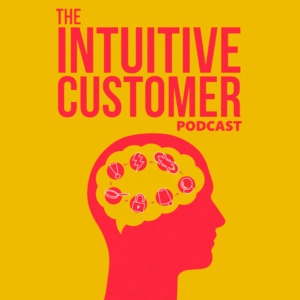I was in the Apple Store the other day, and I thought to myself, this is more like a club of shared values and interests than a shop. It was as if it was a meeting place for like-minded people with common ground.
It felt like a tribe. We discussed Tribalism on a recent podcast and how your brand can create one with your customers. Tribes are not only good for your brand, but they are excellent for building Customer Loyalty.
What is a Tribe?
So, from a technical viewpoint, what is it? Tribes are groups of people that are similar or connected in some way.
Tribes can be formal or informal. Sometimes tribes are based on the nationality, race, or ethnicity of a group of people, which is what I mean by a “formal” tribe. However, they can also be people connected through the use of a single brand or employment by the same company or enjoyment of a similar hobby. These are all informal tribes.
People can form relationships with brands and groups of employees. Tribalism feels natural to us as human beings, as well as the feelings of loyalty you develop for your community.
If you can tie your brand to a group of other consumers that feel connected, that would ramp up the loyalty. Uniting a group doesn’t take a lot of effort, either.
Researchers ran experiments where people drew slips of paper out of a hat with color on them, either red or blue. After everybody draws a paper out, you explain it’s a competition between the red and blue teams. People get tribal right away in these situations with no more connection than the slip of paper they drew. It appears that wanting to be in a tribe is a primal thing.
From a scientific perspective, it is interesting that people all over the world throughout human history formed these groups, sometimes spontaneously. Also, from an anecdotal perspective, people want to build these tribes because they want to belong to a group.
However, in addition to this sense of belonging, we also want to be different from other people. So, it is equally essential that other people are not in the tribe. There needs to be rival tribes. For example, in the early days of Apple, it was always Apple against Microsoft, and, ironically, Apple was the underdog.
Furthermore, when you’re in a tribe, you protect the tribe. If someone attacks the tribe, you defend it. Moreover, out-of-group threats produces in-group cohesion. When you feel like adversity threatens your clan, it ties your group together.
Certain Brands Foster Tribes
From a marketing perspective, if you can tap into the natural, evolutionary need of Tribalism for people, you will get some power. One way to try to foster tribes is to look at your customer groups. We talk about customer groups when we discuss Customer Segmentation. The principles of Customer Segmentation are the same as those for a tribe.
However, a significant difference exists between tribes and segmentation, so don’t confuse the two. With a Customer Segment, you are put into a group by somebody else, and, therefore, you don’t know you are in one. By contrast, you know you are in a tribe because you chose to be.
Creating communities from people that you might have grouped in a segmentation provides many powerful elements working in your favor for the brand. The community does your work for you.
Some brands have already done it. They have groups of customers that have bonded over their shared experience with the brand.
For example, I recently bought a Jeep. Now, other people driving Jeeps wave at me sometimes! At first, I didn’t get it; I thought they were trying to tell me there was something wrong with the car. Now, I realize they are waving because we both have a shared Jeep experience. I didn’t know it at the time, but when I bought my Jeep, I joined the community. Now, when someone in a Jeep waves at me, I wave back.
Another example is Harley-Davidson motorcycles. In our global Customer Experience consultancy, we did some work with Harley-Davidson. We learned that people don’t just buy Harley-Davidson’s for the bike; they buy them for the image. Many people have nothing in common at all except that they own the bike. However, they will still form riding clubs. Sometimes, Harley riders will stop for strangers astride their hog beside the road to check if they are okay and that the bike is running alright. The Harley tribe takes care of its own.
Apple is an interesting example. Part of the reason that Apple produced a tribe in a way that Microsoft never did to the same extent was in part because Apple was an underdog for so long. Now, Apple is one of the biggest companies in the world. However, because of this underdog history, Apple still feels like a tribe, even though so many people own iPhones. Although, it feels less like a tribe now than it did 10 or 15 years ago.
Dunbar’s Number
British Anthropologist Robin Dunbar suggests the number of connections most humans find manageable, is 150. He arrived at this theory by comparing the ratio of brain sizes and group sizes in his study of non-human primates. The ratio was determined through neuroimaging and observing the animals’ grooming behavior, which is a critical social behavior of primates. He concluded that the size of the neocortex in the brain, which handles language and cognition, dictates the amount of complexity we can manage. Dunbar and his team discovered that 150 was a consistent number for how big a group could get before it fell apart.
I noticed this also in my corporate career. As I was going up the ladder, I had different levels of responsibility. At one point, I had around 150 people, and I knew everybody. I could call them by name and knew something about his or her family. However, when I was running a team of three and a half thousand, I couldn’t do that. I didn’t know everybody. My neocortex couldn’t handle it.
Dunbar’s number and the size of the tribe might matter for personal connections, but not for the size of your tribe. It can grow far beyond 150 members. As we said before, Apple is not a select group anymore. It’s not like I know all the other members of the ‘Apple Tribe’. However, it still has the feeling that I share an experience with all of them, and, in many ways, it is part of the brand to me.
Tribe Loyalty
A significant issue with the subject of Tribalism is loyalty. People are loyal to their tribe.
When we discussed loyalty in the past[TL2] , we’ve determined there’s a difference between loyalty and inertia.
If you’re in the tribe, you have loyalty, which is one of the reasons why you’re willing to defend it. It’s also why you are more forgiving. Stephen Covey, in The Seven Habits of Highly Effective People, talks about the Emotional Bank Account. To summarize, Covey said when you enjoy a high balance in the Emotional Bank account with somebody, he or she can do something you don’t like, but you remain loyal to them.
The existence of a tribe is like getting an extra deposit in that emotional bank account. It ties into the tribe member’s sense of self (and belonging, as we mentioned before), which are both emotional connections. When you have a tribe, they might not like all the things you do, but that emotional connection makes them more forgiving.
Also, determine a strategy for encouraging your customers to feel like a part of a community. An example is Scapbook.com, which is a company that sells paper, stamps, and buttons and other materials that people use to create scrapbooks. People who make albums have a shared interest, and build a community, Scrapbook.com built a robust forum where people could share a picture of their creations. Then, other Scrapbookers could comment on them and share their photos.
Part of how Scrapbook.com built this community was the founders ruthlessly policed the forum at the beginning to ban negative comments. They felt that tearing down people’s work was off-brand for them. The company wanted a supportive environment for their customers, not a snarky, free-for-all.
The forum became a significant driver of the value of the Scrapbook.com brand. They created a tribe of people who had the values that they found useful and consistent. The customers would support each other and encourage other scrapbookers.
Use the community as your brand. People will recognize it and ‘join the tribe’.
However, being clear about what you can do and what you can’t do in your tribe is an essential part of building these communities.
Tribes Are Powerful
Not every brand can build a tribe. However, the ones that can have a lot of additional benefits to their Customer Experience. From the evolutionary need to belong to the extra definition of self that is associated with using your product or service to the emotional connection it can create, tribes are potent resources.
We recommend giving some thought to what would make up your tribe. Consider those shared interests and the lifestyles of your customers, the unifying elements of what could be a diverse group of people in demographics and experience. What things would be the same amongst the members, and how would you enhance the connection or leverage that?
Being a part of the tribe is a plus for the brand. It can be a real value add for your brand if people can become a part of this community by buying their way into it through certain products. Moreover, the emotional bank account won’t be the only place where you can make a deposit.

To hear more about Tribalism in more detail, listen to the complete podcast here.
 Our Secrets of Customer Decision Making reveals how by embracing behavioral economics and the different parts that make up a Customer Experience you can better understand why customers make the decisions they do. We share the secrets and psychological principles that you can use to influence customers to buy more. To learn more, please click here.
Our Secrets of Customer Decision Making reveals how by embracing behavioral economics and the different parts that make up a Customer Experience you can better understand why customers make the decisions they do. We share the secrets and psychological principles that you can use to influence customers to buy more. To learn more, please click here.

Hear the rest of the conversation on Tribalism: Are You In with the In-Crowd on The Intuitive Customer Podcast. These informative podcasts are designed to expand on the psychological ideas behind understanding customer behavior. To listen in, please click here.
If you enjoyed this post, you might be interested in the following blogs and podcasts:
WHAT AFFECTS CUSTOMERS PERCEPTION OF PRICE? (Podcast)
THE RECESSION IS COMING; WILL YOU BE PREPARED?
THE REMARKABLE POWER OF HABIT TO TRANSFORM CUSTOMER BEHAVIOR
Colin Shaw is the founder and CEO of Beyond Philosophy, one of the world’s leading Customer experience consultancy & training organizations. Colin is an international author of six bestselling books and an engaging keynote speaker.
Follow Colin Shaw on Twitter @ColinShaw_CX
Sources:
Ro, Christine. “Dunbar’s number: Why we can only maintain 150 relationships.” Bbc.com. 9 October 2019. Web. 2 November 2019. < https://www.bbc.com/future/article/20191001-dunbars-number-why-we-can-only-maintain-150-relationships>.

